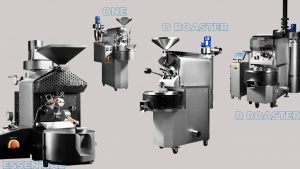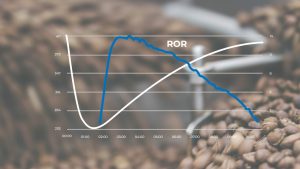Understanding the Rate of Rise (RoR)
In our previous blog, we discussed the importance of the coffee roasting curve, particularly the Bean Temperature (BT) graph. This BT graph is often present together with the Rate of Rise (RoR) curve, and used by coffee roasters to define what exactly is going on during the roast. In the coffee industry, these two graphs are possibly the most referred to during a roast compared to any other types of roast data. This time, we will find out more about Rate of Rise (RoR) and how to use RoR to control the roast, avoid defects, and achieve the best flavor profile for a particular green coffee bean variety.
What is Rate of Rise (RoR) and How It Is Measured
In a nutshell, Rate of Rise (RoR) can be defined as the speed at which the temperature of the coffee beans is increasing at any given point in time during a roast. In a typical roast, RoR is usually measured in a 1 minute time period. For example, a roast with an RoR of 4 means that the bean temperature increases by 4 degrees every 1 minute.
To measure RoR, a temperature probe is installed inside the coffee roaster machine to take heat readings. This periodic data is collected throughout the roast and represented in a graph. The RoR curve has a very different shape on the graph compared to the BT curve. During a roast, the RoR curve has the tendency to rise before starting to stabilize just before the first crack, and then falling, in some cases, rapidly.
How Rate of Rise (RoR) Can Help Coffee Roasters Achieve The Desired Roast Profile
Professional coffee roasters use the RoR graph to learn what is going on inside the roasting machine and tweak the parameters accordingly to achieve the desired roast profile consistently. Coffee roasters focus on observing three main points of the roast: Max RoR, RoR at first crack, and RoR when the roast ends.
How high or low should Rate of Rise (RoR) be? In a nutshell, a higher RoR indicates that the roast is progressing faster, while a lower RoR means that the roast is progressing slower. The coffee roaster’s aim is to create a smooth curve, which indicates that the roast is going well. Spikes, also known as “flicks” on the graph indicate that the beans are taking on heat too quickly, and this may result in an uneven roast, less complexity with a burnt flavor of the roasted coffee beans. On the other hand, if the RoR is too low there is very little increase of temperature inside the coffee beans, leading to a “baked coffee” with a flat taste and doughy flavor.
The right RoR depends on many factors: coffee bean size, density, moisture content, the desired roast profile, and many more. Before the roasting starts, a specialty coffee roaster should know the coffee beans’ characteristics really well in order to control the RoR more effectively, culminating in a more balanced and consistent roast profile. A coffee roaster’s ultimate goal is to control the RoR with precision, and by doing so he or she will be able to highlight certain flavors of the coffee beans.
With Berto Roaster machine, the control is entirely in your hand. All our roaster machines are designed to be highly responsive, thanks to highly convective heat transfer, so roasters can freely explore and tweak in order to achieve the desired roast profile. The control panel is fully optimized for the roasting process, with a playback capability that guarantees the consistent quality of the roasted beans no matter who operates the machine. Explore our products or contact us for more information on our roaster machines.

Roasting coffee beans is a task that demands meticulous attention to detail. In this sensitive process, even the smallest changes can bring dramatic effects on the final cup. Observing the data points over time on the Rate of Rise (RoR) graph allows coffee roasters to really understand which points to focus on or to tweak in order to keep their roast profile consistent.


